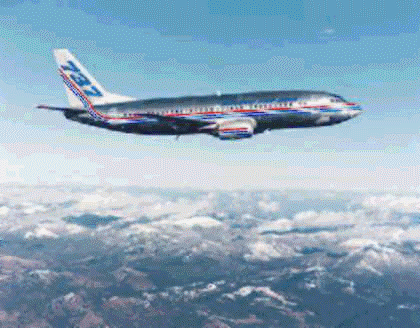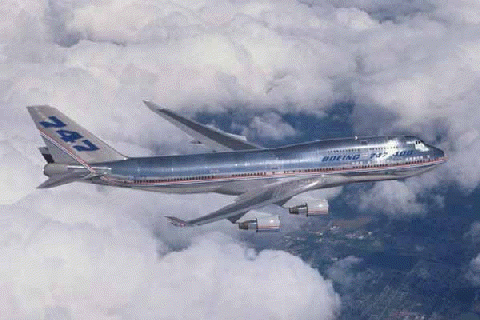Calculating
Range for a Constant Velocity Activity
If so instructed by your teacher, print out a worksheet page
for these problems.
Open
the slide called Range - Constant
Velocity. Read the information on this page.
Pay special attention to the four forces affecting an airplane. Open
the link
Unbalanced Forces and observe the animation of how flight is affected
by the change
in these forces. When these force are equal, the airliner is said
to be a Cruising Airliner
and velocity is a constant. If we assume the condition of a cruising
airliner, then we can
calculate velocity, distance (range), and time using the equation
given on the top of the
Range page. This equation is d = V t .
Following the
directions given in the introduction to the activity, you have investigated
some properties of air travel. You have learned that for an airplane
traveling at a constant
velocity and for a given amount of time, we can calculate the distance
the airplane will
travel. Also, if given any of the two variables of velocity, distance,
and time, you can solve
an equation for the missing variable.
- In this activity,
you will take a virtual flight in an airplane. You must first
decide the
city from which you are flying, and in which city you will be
landing. Visit this Web
site to determine the
distance
you will be traveling.
(Use the back button located on your browser to return)
-
- Beginning
city: ______________
Destination
city: _____________
Distance
traveled = _______________ miles
Convert
distance traveled from miles to kilometers (hint: 1 mile
= 1.6 km)
d
= ______________ miles = ______________ km
- Different
airlines have different maximum velocities. Two Boeing airliners
are shown below.
Choose the plane on which you would like to fly and find the maximum
velocity for that airliner.
|

|

|
|
Boeing
737-300
|
Boeing
747-400
|
- Indicate
the airliner on which you will be flying and record its maximum
speed. (You may need our on-line
calculator to calculate the velocity
from the Mach number and altitude).
Boeing 737-300
v = __________ km/h
Boeing 747-400
v = __________ km/h
- Now that
you have values for the velocity and distance variables, use the
formula from the Range
page to calculate how long the flight will take you. (Remember
the values you are using are
averages. Do not consider time for take off and landing).
t = __________
km / __________ km/h = __________ hrs.
- Where
in the world are Orville and Wilbur going now?
Orville
and his brother Wilbur stepped onto a plane in Cleveland,Ohio,
and flew on a Boeing 737-300
for about 4 hours. Use the distance
page
to find
out where in the world they are.
What
was Oriville and Wilbur's first destination? (Circle the correct
answer.)
- a)
Miami, FL
b)
Los Angeles, CA
c)
San Antonio, TX
- The
Concorde
is a supersonic
jet which flies people at Mach 2 (that's twice as fast as the
speed of sound!). It takes
the Concorde about 3 hours to fly from New York City to London,
England. The Concorde
flies at about 1350 m/hr.
Use this
information to make the following calculations:
- a. Convert
m/hr to km/h (remember 1 mile = 1.6 km) 1350 m/hr = ________
km/hr
b. Use
the d = velocity X time formula to figure out the approximate
distance between
New York City and London.
d =
__________ km
|
